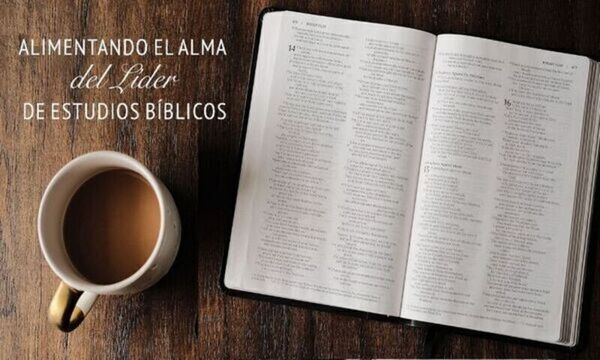The Letters of James, Peter, John, and Jude constitute one of the final frontiers in New Testament studies. Whereas the four Gospels and Paul’s letters have received copious attention, these seven letters, in comparison, constitute the distant shores of a largely unknown world. It is not uncommon to search in vain for substantive treatment of any one of these letters in the standard introductions or theologies of the New Testament. While one can find a handful of introductory texts focusing on “the latter New Testament” or “Hebrews through Revelation,” there are precious few devoted specifically to the Letters of James, Peter, John, and Jude, and almost all fail to consider the possibility of interpreting the Catholic Epistles as a discrete collection.[1] Though considering the canonical collections of the “Gospels” and the “Pauline Epistles,” even the groundbreaking Dictionary for the Theological Interpretation of the Bible (2005) fails to supply an entry for the Catholic Epistles.
Though not the consensus, these texts are most commonly called “The General Letters” or “Catholic Epistles.” The use of the term in New Testament scholarship wavers between two poles: 1) a genre designation, viz., circular letters addressed to a “general” audience or 2) a title for a discrete canonical collection. When referring to the former, the limits of the collection are rather unclear, either at times including Hebrews and Revelation as other “general letters” or excluding the letters of John because they belong with the other Johannine literature. The latter understanding, though once common before the advent of historical-criticism, is now quite rare.
The issue I am concerned with is whether these seven letters should be read in isolation from each other, taking their individual historical situations as the single, determinative context for their interpretation, or whether their collection and placement within the New Testament specifically (and within the Christian canon generally) should constitute a further context within which they are interpreted. Too often historical and theological concerns are sealed off from one another as these (and other) New Testament texts have been interpreted.
This surfaces a deeper problem of New Testament scholarship regarding the relationship between historical-critical analysis of New Testament writings and reception-historical, theological study of their importance in early Christianity. The key question is whether subsequent judgments regarding canon clarify or obscure the meaning of these texts. Adolf von Harnack argued negatively that, “Canonization works like whitewash; it hides the original colors and obliterates all the contours,” hiding “the true origin and significance of the works.”[2] Harnack drives a wedge between historical-critical reading and canonical meaning of New Testament texts. Furthermore, John Barton finds no hermeneutical significance in canonical ordering:
At least some rabbinic and Christian listings of books seem to be based on nothing more significant than length, which surely implies that the order has no hermeneutical implications. This certainly appears to be the basis for the order of the Pauline epistles in many manuscripts, indeed, in the now current order—though there are a few additional complications such as the insertion of Ephesians after the shorter Galatians, and the separation of Paul’s letters in individuals into a section of their own. Thus the fact that Paul’s correspondence has been turned into an ordered corpus is important, but the fact that (for example) the Corinthian letters come before those to Thessalonica is not.[3]
Furthermore, in a recent assessment of canon, John Poirier accuses Brevard Childs of smuggling into his work the assumption both that canonical phenomena are always intentional and hermeneutically significant.[4] Poirier thinks it a more “natural scenario” that the canon was merely a convention for preserving apostolic writings and that viewing texts through the lens of a later, church-endorsed canon is distorting.[5] The historical-critical approach to New Testament studies rejects later judgments regarding the collecting and ordering of the canon as anachronistic to their right interpretation. Thus the texts’ situation in history is set over against their situation in the canon. I might add that the opposite is equally distorting. Pitting the canonical context over against the historical context results in a docetic text cut free from time and place.[6] Either move disconnects historical from theological concerns. Historical reconstruction and the theological significance of the text are further isolated from one another as these two means of inquiry are usually assigned completely different disciplines within the academy—namely, Biblical Studies and Patristics, or Historical Theology—such that practitioners of either discipline are encouraged by their professional context not to account for the results of each other’s work.[7]
Asking whether the Catholic Epistles should be read as a canonically significant collection cuts across the line of demarcation between Biblical Studies and Patristics. A basic presupposition undergirding the set of questions I am interested in asking is that the significance of canon is not limited to the listing of received books (canon as a fixed collection or norma normata),[8] but also involves the process by which these texts were received, collected, transmitted, and shaped in the early apostolic period (canon as a “ruled” process, “rule of faith” or norma normans).[9] Brevard Childs has argued that canon itself “includes philological, historical, literary, and theological dimensions.” And furthermore, that taking the canon seriously in one’s interpretation challenges “the widespread assumption of the New Testament guild that the issue of canon lies in the field of subsequent church history and is irrelevant to the study of [the New Testament itself].”[10]
In this context I am working on making a sustained argument for reading the Catholic Epistles as an intentional, discrete collection set within the New Testament; namely, that the process of editing, collecting, and arranging of these seven texts are neither anachronistic to their meaning nor antagonistic to their composition. This larger project will hopefully culminate in a monograph entitled: The Wisdom of the Pillar Apostles: Formation and Function of the Catholic Epistles as a Canonical Collection. There are very few individuals working in this area. The only modern interpreters who read the Catholic Epistles as an intentional canonical collection, known to me, are enumerated in my forthcoming article “Are the Catholic Epistles a Canonically Significant Collection? A Status Quaestionis,” in Currents in Biblical Research. Among these contributions the most extensive to date is the recent monograph from David Nienhuis and Robert Wall, Reading the Epistles of James, Peter, John, and Jude as Scripture: The Shaping and Shape of a Canonical Collection (which I have reviewed in a forthcoming volume of Journal of Theological Studies). My hope for this larger endeavor is both to encourage the church’s reengagement with the Catholic Epistles on a theological level and to workout a reading of the Catholic Epistles that balances theological and historical concerns within the sphere of the canon.
[1] For example: Dictionary of the Later New Testament and its Developments (which does not have an entry for “The General Letters” or “Catholic Epistles”), Lewis R. Donelson, From Hebrews to Revelation: A Theological Introduction (Louisville: Westminster John Knox, 2001); Terry L. Wilder, J. Daryl Charles, and Kendell Easley eds, Faithful to the End: An Introduction to Hebrews through Revelation (Nashville: B&H Publishing, 2007). Karen Jobes comes the closest to introducing these particular seven letters, Letters to the Church: A Survey of Hebrews and the General Epistles (Grand Rapids: Zondervan, 2011). None of these texts consider the possibility of interpreting the Catholic Epistles as a discrete collection; rather, they opt to isolate the historical-cultural location of each text as the default context within which to understand their meaning.
[2] Ã˝Adolf von Harnack, Origins of the New Testament and the Important Consequences of the New Creation, New Testament Studies VI. Trans. Jr. R. Wilkinson (Williams and Norgate, 1925), 140-141; as quoted in David R. Nienhuis and Robert W. Wall, Reading the Epistles of James, Peter, John and Jude as Scripture: The Shaping and Shape of a Canonical Collection [Grand Rapids: Eerdmans, 2013], 13).
[3] John Barton, Holy Writings, Sacred Text: The Canon in Early Christianity (Louisville: Westminster John Knox, 1997), 147-8.
[4] John Poirier, “The Order and Essence of Canon in Brevard Childs’s Book on Paul,” BBR 20 (2010): 503-516.
[5] Poirier, “Order and Essence,” 505.
[6] Cf. the Hans Frei’s notion of the “realistic narrative” which bears only self-contained truths which, in the end, are not tethered to real historical events.
[7] For an exception to this general rule, see Jens Schröter, From Jesus to the New Testament: Early Christian Theology and the Origin of the New Testament Canon (BMSEC 1; Baylor University Press, 2013).
[8] Here, canon is a fixed list, or fixed collection of authoritative books. Usually coming toward the end of a process, canon as fixed list is a later phenomenon for the New Testament as the “final” form of the 27 books in the NT emerge in the fourth century. Canon as a fixed list denotes a closed collection of texts that are authoritative and hang together as a group functioning as a standardized collection where outside texts could not be included and accepted texts could not be omitted—thus a “list of books” or norma normata (“the normed norm” or “a rule that is ruled”).
[9] This view understands canon as an authoritative rule, that is, canon as an authoritative set of teachings that shape the Christian community (as well as the Christian Scriptures) that emerged within the first decades of the Christian movement (say 40 C.E.?). Also know as the “rule of faith,” this “authoritative rule” or canon functions as a fluid authority within the Christian community; a “rule” or “norm” that defines faith and serves as a guiding principle for belief and practice—thus a “rule of faith” or norma normans (“the norming norm” or “the rule that rules”).
[10] Brevard S. Childs, The Church’s Guide for Reading Paul: The Canonical Shaping of the Pauline Corpus (Grand Rapids: Eerdmans, 2008), 253 (emphasis added).
Ã˝
 ΩÒ»’∫⁄¡œ
ΩÒ»’∫⁄¡œ
.jpg)

.jpg)
.jpg)